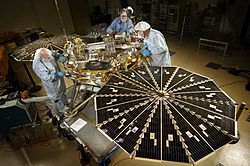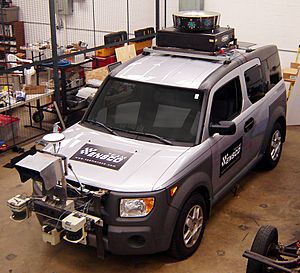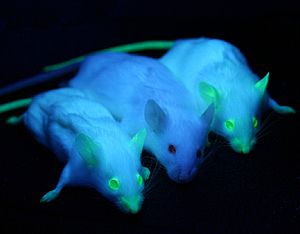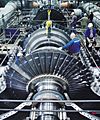Engineering facts for kids
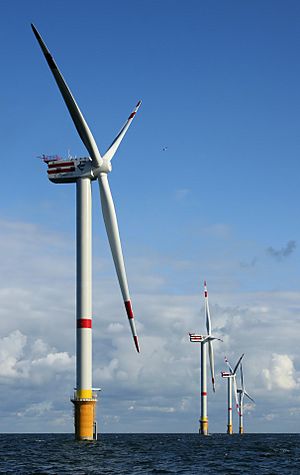
Engineering is about using science and math to design and build useful things. People who do this work are called engineers. They often study for many years at a college or university. Engineers use their skills to create new things or solve tricky problems. They design everything from computers and buildings to watches and websites.
Contents
History of Engineering
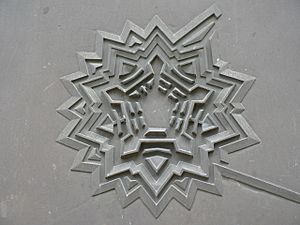
Engineering has been around for a very long time, since ancient humans invented simple tools like the wedge, lever, wheel, and pulley.
The word engineering comes from the word engineer. Long ago, around 1390, an engineer was someone who built or operated a military "engine," like a catapult used in war. The word "engine" itself comes from a Latin word, ingenium, which means "clever invention" or "mental power."
Later, as people started designing non-military structures like bridges and buildings, they created the term civil engineering. This helped tell the difference between engineers who built things for everyday life and those who built things for the military.
Ancient Engineering Wonders
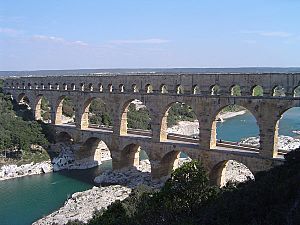
Many amazing structures from ancient times show the skill of early engineers. These include the Egyptian pyramids in Egypt, the Acropolis and Parthenon in Greece, and the Roman aqueducts and Colosseum. The Great Wall of China and the Brihadeeswarar Temple in India are also great examples. Some ancient wonders, like the Hanging Gardens of Babylon and the Lighthouse of Alexandria, are no longer standing but were incredible engineering feats.
The first known civil engineer was Imhotep. He worked for the Pharaoh, Djosèr, in Egypt around 2630–2611 BC. Imhotep likely designed and oversaw the building of the Pyramid of Djoser, also known as the Step Pyramid, at Saqqara.
Ancient Greece also saw the creation of many machines. The Antikythera mechanism, an early mechanical computer, and the inventions of Archimedes are examples of early mechanical engineering. These inventions used complex gears, which are still important today in things like robotics and automotive engineering.
Ancient armies from China, Greece, Rome, and Hungary used military machines like artillery, triremes, ballistas, and catapults. In the Middle Ages, the trebuchet was developed.
Engineering in the Renaissance and Beyond
The first steam engine was built in 1698 by Thomas Savery. This invention was a huge step and helped start the Industrial Revolution. This period saw the beginning of mass production, where many items could be made quickly.
As engineering became a more defined profession in the 1700s, it focused more on using mathematics and science to solve problems. Fields like the "mechanic arts" (which involved making machines) also became part of engineering.
Modern Engineering Achievements
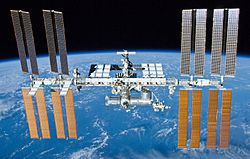
The inventions of Thomas Newcomen and James Watt led to modern mechanical engineering. As factories grew during the Industrial Revolution, mechanical engineering quickly developed in Britain and around the world.
John Smeaton is often called the "father" of civil engineering. He was an English engineer who designed bridges, canals, harbours, and lighthouses. He also designed the third Eddystone Lighthouse (1755–59). For this lighthouse, he used a special type of mortar that could set underwater. He also used a clever technique with granite blocks. His work helped lead to the invention of modern Portland cement.
In the 1800s, electrical engineering began to grow. This was thanks to experiments by people like Alessandro Volta and Michael Faraday. Inventions like the electrical telegraph (1816) and the electric motor (1872) also helped. Later, the work of James Clerk Maxwell and Heinrich Rudolf Hertz led to the field of electronics. The invention of the vacuum tube and the transistor made electronics grow even faster. Today, electrical and electronics engineers are very common.
Chemical engineering started in the late 1800s. Factories needed new materials and ways to make things. By 1880, there was a big need for large-scale production of chemicals. This led to a new industry focused on making chemicals in big industrial plants. Chemical engineers design these plants and processes.
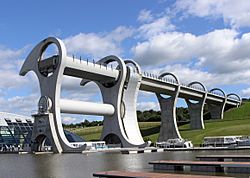
Aeronautical engineering deals with designing aircraft. Aerospace engineering is a newer term that also includes designing spacecraft. This field started with aviation pioneers around the early 1900s. However, some of the earliest ideas came from George Cayley in the late 1700s. Early aeronautical engineering often used ideas from other engineering fields.
After the successful flights by the Wright brothers, military aircraft developed quickly during World War I. Research continued to combine theoretical physics with experiments to understand flight better.
In 1990, with the rise of computer technology, the first search engine was built by computer engineer Alan Emtage.
Branches of Engineering
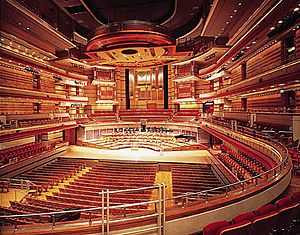
Engineering is a very broad field with many different specialties. Here are some of the many types of engineers:
- Aerospace engineers design vehicles that fly in the air or in space, like airplanes and rockets.
- Biomedical engineers create and work with medical equipment, like artificial limbs or diagnostic machines.
- Chemical engineers use chemicals to make products such as medicines, plastics, or fertilizers for crops.
- Civil engineers design and build roads, bridges, buildings, and other public structures.
- Computer engineers design and build computers and the parts inside them.
- Electrical engineers work with electricity. They design everything from small radios to large power grids that carry electricity across the country.
- Electronic engineers focus on electronics, which are used to build computer parts and many electrical devices.
- Environmental engineers create solutions to protect and improve the environment, like cleaning up pollution.
- Manufacturing engineers design and improve the machines and assembly lines that make products. They often work with robots to help companies produce things faster and with fewer mistakes.
- Mechanical engineers design machines or things that move, like cars and trains. They might also help design power plants or factories.
- Mechatronics engineers combine different fields like mechanical, electrical, and computer engineering to create smart machines.
- Marine Engineers design, build, test, and fix boats, ships, and underwater vehicles, focusing on their internal systems.
- Nanotechnology engineers study and work with very tiny things, like individual atoms and how they are put together.
- Nuclear engineers design and build nuclear power plants. They also study how certain radioactive elements behave.
- Structural engineers design and analyze buildings and other large structures to make sure they can stand strong against gravity, wind, and natural disasters.
- Software engineers design and write programs for computers.
- Systems engineers look at how complex systems work and try to make them more efficient and smarter.
Engineers don't just work with machines; they also work a lot with other people. Many engineering projects are very large and complicated. Often, different kinds of engineers work together and help each other. For example, computer engineers need help from electrical engineers to build a computer. That computer then needs programs written by software engineers. The computer might be used by aerospace engineers to control an airplane. Since an airplane is a big system with many parts, mechanical engineers and systems engineers are also needed.
Study of Engineering
Most engineers have many years of training. A big part of their training involves learning to work within a limited budget and with specific materials.
Images for kids
-
The steam engine, a key invention of the Industrial Revolution, shows how important engineering is in modern history.
-
The Ancient Romans built aqueducts to bring clean, fresh water to their cities.
-
The first iron bridge was built using cast iron, a new material that became available thanks to steam engines.
-
An offshore platform in the Gulf of Mexico.
-
An Electric motor.
-
The InSight lander with its solar panels open in a cleanroom.
-
Designing a turbine needs many engineers working together, as it involves mechanical, electrical, and chemical processes.
-
A drawing for a booster engine for steam locomotives. Engineering uses design, mathematics, and science.
-
A small part of the World Wide Web, showing hyperlinks.
-
Robotic Kismet can make many different facial expressions.
-
Engineers, scientists, and technicians working inside the National Ignition Facility (NIF) target chamber.
-
The International Space Station is used for science experiments in space.
-
Leonardo da Vinci, a famous artist and engineer, also studied human anatomy.
See also
 In Spanish: Ingeniería para niños
In Spanish: Ingeniería para niños


